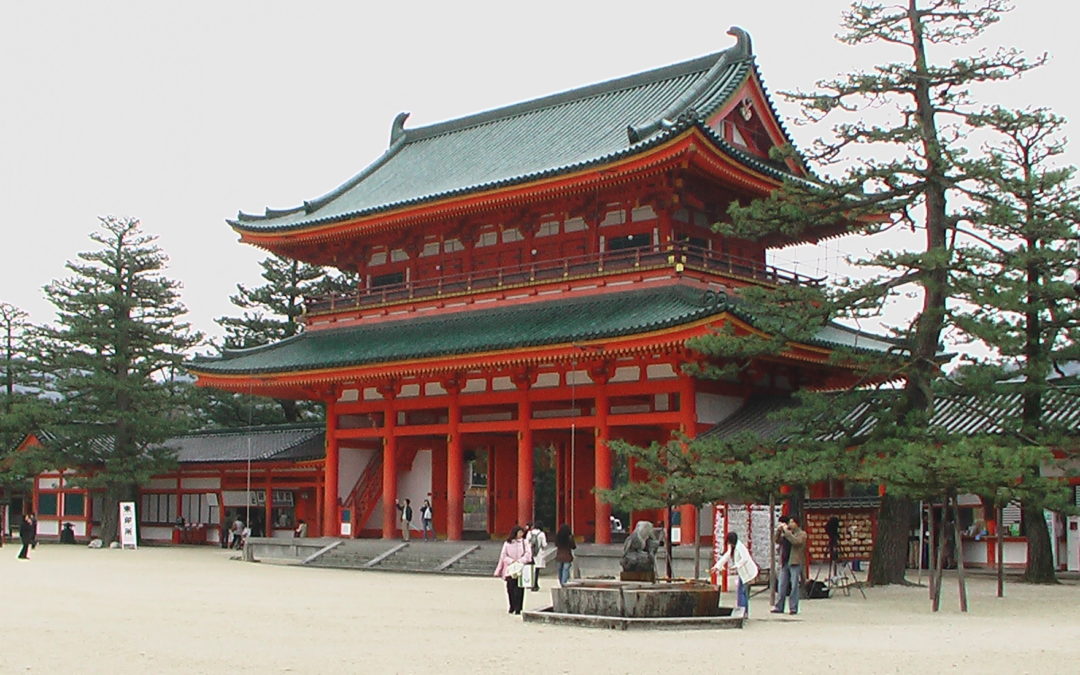What is Shinto? Shinto is the indigenous spirituality of Japan. Shinto practices were first recorded in the Kojiki and Nihon Shoki in the 8th century. The earliest writings do not refer to Shinto as a religion, but as historical folklore and mythology. Shinto today is recognized through its shrines to various kami or events such as harvest festivals, historical monuments, and natural places of beauty.
The word Shinto means “Way of the Gods or Kami”. Kami are somewhat like spirits, deities or represent something or someone “in the spirit of” some other ancient thing. Sometimes it refers to humans, the essence of certain people, and natural places or forces in the world, such as rivers, mountains, buildings, places, waves, wind, and trees. The best way I have heard it explained is that there are natural feelings that all living human beigns have when faced with places of awe, memories of significant people or events, or increadible natural forces. This represents the definition of Kami. However, unlike many religions, Shinto does not require faith. In other words, one is not required to exercise faith in something or someone that has never had a physical existance. There is nothing supernatural to believe in. There are no miracles other than the miracle of life and the consequence of death.
Shinto teaches that everything contains kami. Kami or the kami exist in all things. But Kami can be stronger in certain places or things than others. There are natural places considered to be sacred because of history that may have occured there, or because of their influence on human and natural existance. Therefore these places can be “worshipped”. Often shrines are constructed as places where people can do specific rituals to convey their reverance for the place. The way these shrines are built is in a manner to separate the normal everyday mundane life from the “spiritual” realm. A shrine can be a building, or a representation of a building such as the home shrine “kamidana” or a larger version which becomes part of a rooms construction “kamiza” such as in a dojo.
Much of the construction of these shrines represent very ancient contruction methods that were used to create rice barns and ancient communal buildings. This is one of the reasons you will often see some form of Sake (rice beer) at a Shinto Shrine. Shrines exist on nearly every block in a traditional Japanese town or city. They are most easily recognized by their red color, and some representation of a Tori. Most are unmanned, and are maintained by people in the neighborhood. It is a place where those who live there – or those who pass by may stop and pay homage to all kami, or particular kami. Large shrines usually exist in larger towns and can be manned by Shinto priests who reside over various ceremonies.
Another important concept in Shinto is that of the stream or flow. It postulates that all living things exist in the same flow of the “river of life”, but that we experience it at different times and in different places. Although from our perspective we exist in a place in time, we are but a piece of the overall river that flows consistently throughout time. It is as if one throws a stick into a flowing river every 15 minutes. Each of those sticks will float down the river. Each will be in the water. Each will be wet. Each will pass the same rocks and the same trees, and exist under the same sky – yet will do so without ever experiencing these things at the same time as the other sticks. Some sticks are ahead in the flow – some are behind – yet all are in the flow. Such is life. And the recognition of ones self in that ever moving stream of existance and experience inextricably ties us to all other living things in the stream. To understand ourselves is to understand all life and all life experience. To know that you will live and you will die – that ones came before us and ones will come after us – and that we are tied together – is key to understanding Shinto thought.
This is one of the reasons many traditional dojos have representations of Shinto in them. People at the dojo, especially in western culture will likely not be Shinto practitioners, yet the concepts pervade the dojo. Being part of the ongoing lineage of the martial way. Knowledge being passed from teacher to student, who them becomes the teacher and passes the knowledge to yet another generation of students is very Shinto. Feeling the “sacredness” of the dojo and the relationships formed there. Visiting the homeland that spawned your specific martial art, and walking the same roads and seeing the same shrines that your martial ancestors trod and saw wells up the overwhelming feeling of awe that is such an important part of Shinto thought.
There is much more to Shinto than this brief article – but this is the essence – the essence that all living beings experience whether or not they have any knowledge of Shinto. Like the Japanese say, a Japanese person may choose to be Christian, Buddhist, or any other religion – but all are born Shinto.


Hello! This is my 1st comment here so I just wanted to give a quick shout out and tell you I genuinely enjoy reading